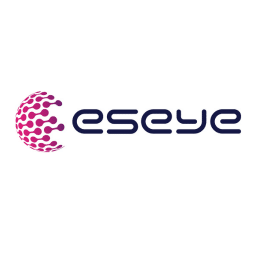Eseye brings decades of end-to-end expertise to integrate and optimise IoT connectivity delivering near 100% uptime. From idea to implementation and beyond, we deliver lasting value from IoT. Nobody does IoT better.
Key findings from Eseye's 2023 State of IoT Adoption report
In our third annual State of IoT Adoption survey, we decided to double the survey size to better understand the extensive impact of IoT on the business world.
This year we surveyed 1,009 senior decision-makers across the UK and US who had IoT projects in the following vertical segments: EV charging and smart grid, healthcare and medical devices, manufacturing, supply chain and logistics and smart vending.
The study examines the challenges and opportunities that are hindering and helping IoT adoption, compares IoT growth by market and vertical, and reveals budget forecasts for the next two years. Get a snapshot of the key IoT market trends that emerged from this year’s research report.
IoT estates will increase across the board

Every industry surveyed expects the amount of IoT devices they currently have in the field to increase over the course of the next 18 months.
The supply chain and logistics, and healthcare and medical device verticals are projecting similar growth (85% and 84% respectively), followed by EV charging and smart grids and manufacturing (80%) and lastly smart vending (76%).
EV charging and smart grid respondents plan the biggest jump in estate size with 14% expecting their estates to increase by more than treble and up to quadruple, and 6% expecting more than quadruple!
IoT remains a top priority

Appetite for IoT investment remains healthy year on year. The supply chain and logistics industry lead the way with 77% planning to increase budgets in the next two years. 62% of this sector plans an increase between 25 and 50%.
Last year smart vending held the top spot for the biggest planned percentage increase with 58% planning an increase of between 51 and 100%. 2023 tells a different story though with only 11% of smart vending respondents planning increases of the same magnitude now.
Demand grows for interoperability

Looking ahead 82% of healthcare and medical device respondents think that interoperability between public and private networks should be a priority.
Manufacturing and supply chain and logistics also agreed with this strongly with 81% agreeing respectively. There are many advantages to private networks including high speeds, lower latency and enhanced security.
Smart hospitals of the future will no doubt opt for private networks as standard, especially with the emergence of nascent technology such as remote surgeries and robotics. IoT devices are often in transit, so enabling smooth interoperability between public and private ensures there are no data collection gaps as a result of connectivity downtime.
Appetite for iSIM adoption

61% of respondents are considering iSIM in their future plans. EV charging and smart grid respondents ranked this the highest out of all the industries (68%). Respondents clearly want to capitalise on iSIM’s many benefits, not least that it can be up to 98% smaller than eSIM which frees up lots more space in the device design.
Multi-RAT is the future

For future-proofing their IoT projects, 41% of respondents said multiple radio access types (RATs) were the most important factor. Considering that 78% of respondents believe that reaching near 100% global connectivity is critical for their business, multi-RAT IoT solutions offer unparalleled flexibility to optimise connectivity and help them achieve this target.
Demand for end-to-end IoT services outweighs supply

A strong need arises from all sectors for partners with end-to-end IoT expertise who can offer support throughout IoT product development from idea to deployment. 91% of supply chain and logistics and 90% of EV charging and smart grid respondents said they would find it beneficial to have a monthly subscription service programme with all end-to-end IoT services under one roof.
However this can prove challenging to find, 72% agreed on average across the board. Smart vending and EV charging respondents struggled especially with 77% admitting this was a prevalent issue. The demand for end-to-end IoT expertise appears to outweigh supply. Many vendors specialise in niche areas of the IoT stack and are unable to offer the full suite of services and support that IoT projects need to succeed.
Measuring IoT maturity

9/10 senior decision-makers and IoT strategy implementors said that it would be beneficial for their business if they could assess their IoT project’s level of maturity and compare where their project is at with industry peers. 95% of supply chain and logistics professionals say they would benefit from this information which was more than any other sector surveyed.
Oftentimes IoT devices are deployed before they are ready which can cause further problems down the line. An objective framework like Eseye’s IoT Readiness Level Assessment is designed to help businesses understand which stage their IoT device is at, based on market best practices and similar projects within their industry. It provides a readiness score that can highlight where potential gaps are and where proactive work can be taken so that businesses can avoid lengthy and costly delays later.
Get the full report
Discover the results of our largest State of IoT Adoption survey to date with insights into the challenges and opportunities that are hindering and helping IoT adoption IoT projects from 1,009 senior decision-makers in the UK and US.
